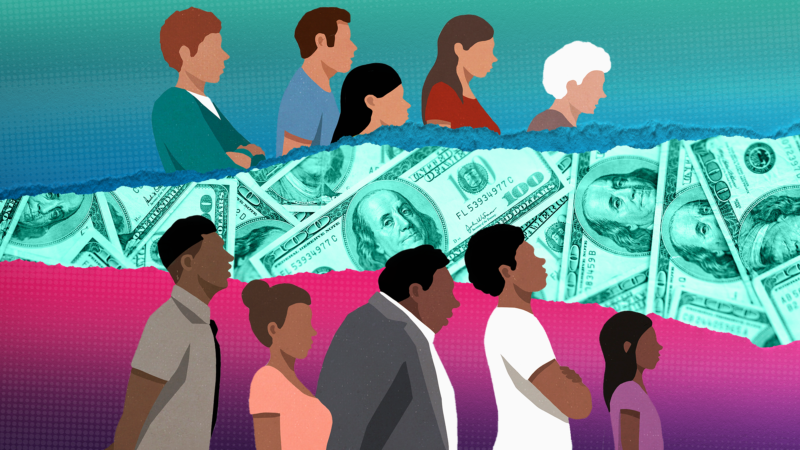The racial wealth gap in the United States remains a significant challenge, highlighting the persistent disparities in wealth and economic opportunities among different racial and ethnic groups. Understanding the economics of the racial wealth gap is essential for identifying the root causes, examining the consequences, and working towards sustainable solutions. In this article, we will explore the complex dynamics of the racial wealth gap, examining its historical context, economic factors, and potential policy interventions. By analyzing the key drivers, impacts, and potential solutions, we aim to shed light on the path towards a more equitable and inclusive society.
Also read: The Dynamics of Income Inequality in the United States: Causes and Solutions
Table of Contents
Understanding the Racial Wealth Gap
Historical Context and Systemic Discrimination
The racial wealth gap has deep historical roots, stemming from centuries of systemic discrimination and structural barriers. Historical injustices, such as slavery, segregation, and discriminatory policies, have contributed to the wealth disparities we see today. Systemic discrimination has limited access to economic opportunities, homeownership, quality education, and capital accumulation for marginalized communities.
Economic Factors and Accumulation of Wealth
Several economic factors contribute to the racial wealth gap. Disparities in income, employment opportunities, educational attainment, and access to financial resources impact the ability of individuals and communities to accumulate wealth. Limited access to homeownership, retirement savings, and investment opportunities further widen the wealth gap.
Also read: The Economics of Corporate Taxation in the US: Competitiveness and Reforms
The Consequences of the Racial Wealth Gap
Income Inequality and Mobility
The racial wealth gap perpetuates income inequality and hinders upward mobility. Limited wealth and financial resources translate into fewer opportunities for economic advancement, making it difficult for individuals and families to break the cycle of poverty. Wealth serves as a cushion during economic downturns and provides a foundation for investments and intergenerational wealth transfers.
Education and Intergenerational Disadvantage
The racial wealth gap also has intergenerational consequences. Limited access to quality education, resources, and opportunities can create a cycle of disadvantage, where children from marginalized communities face hurdles in accessing educational resources and breaking free from the constraints of poverty. This perpetuates the wealth gap across generations.
Also read: The Economics of Higher Education in the United States: Costs and Returns
Addressing Disparities: Policy Interventions
Education and Skill Development
Investing in education and skill development is crucial for addressing the racial wealth gap. Access to quality education, early childhood programs, and vocational training can provide individuals with the tools necessary to secure higher-paying jobs, build wealth, and break the cycle of intergenerational disadvantage.
Wealth-Building Programs and Homeownership
Promoting wealth-building programs and expanding access to homeownership can help narrow the racial wealth gap. Programs that provide financial education, down payment assistance, and affordable housing options can empower marginalized communities to build assets, increase homeownership rates, and accumulate wealth.
Entrepreneurship and Business Development
Supporting entrepreneurship and business development in marginalized communities can create opportunities for wealth creation. Providing access to capital, mentorship, and business resources can help individuals start and grow their businesses, generating income, employment opportunities, and wealth within their communities.
Also read: The Power of Consumer Spending: Driving Economic Growth in the US
Conclusion
Addressing the racial wealth gap requires a multifaceted approach that tackles the systemic barriers, economic factors, and historical injustices that have contributed to its persistence. By implementing policies that promote educational equity, wealth-building programs, homeownership opportunities, and entrepreneurship, the United States can work towards narrowing the racial wealth gap and fostering a more equitable society. Achieving racial economic equity is not only a matter of social justice but also crucial for promoting economic prosperity, social cohesion, and the realization of the nation’s full potential. By acknowledging the systemic nature of the racial wealth gap and committing to meaningful and comprehensive action, we can strive towards a future where every individual has an equal opportunity to thrive and prosper, regardless of their race or ethnicity.

